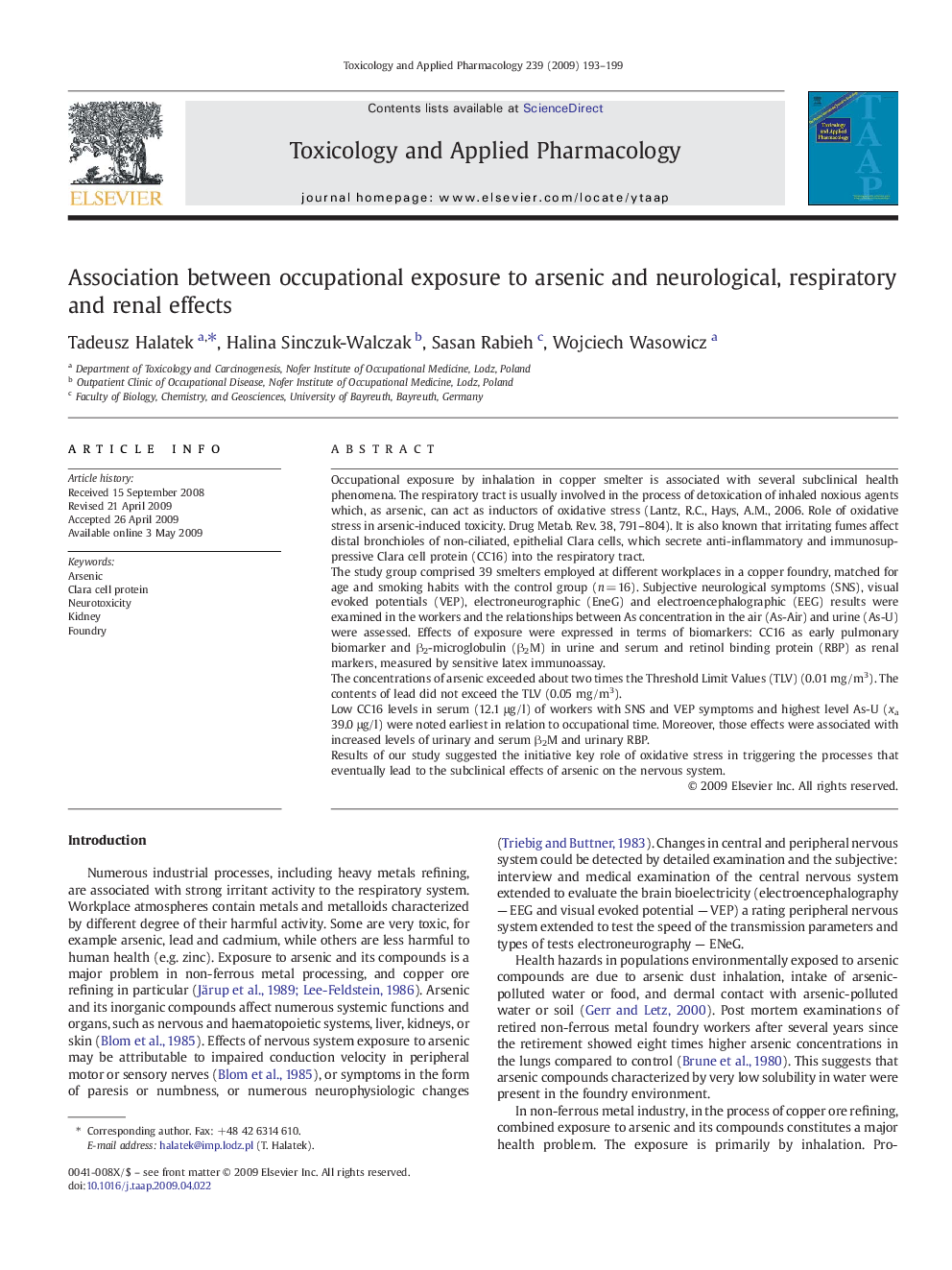| Article ID | Journal | Published Year | Pages | File Type |
|---|---|---|---|---|
| 5846949 | Toxicology and Applied Pharmacology | 2009 | 7 Pages |
Occupational exposure by inhalation in copper smelter is associated with several subclinical health phenomena. The respiratory tract is usually involved in the process of detoxication of inhaled noxious agents which, as arsenic, can act as inductors of oxidative stress (Lantz, R.C., Hays, A.M., 2006. Role of oxidative stress in arsenic-induced toxicity. Drug Metab. Rev. 38, 791-804). It is also known that irritating fumes affect distal bronchioles of non-ciliated, epithelial Clara cells, which secrete anti-inflammatory and immunosuppressive Clara cell protein (CC16) into the respiratory tract.The study group comprised 39 smelters employed at different workplaces in a copper foundry, matched for age and smoking habits with the control group (n = 16). Subjective neurological symptoms (SNS), visual evoked potentials (VEP), electroneurographic (EneG) and electroencephalographic (EEG) results were examined in the workers and the relationships between As concentration in the air (As-Air) and urine (As-U) were assessed. Effects of exposure were expressed in terms of biomarkers: CC16 as early pulmonary biomarker and β2-microglobulin (β2M) in urine and serum and retinol binding protein (RBP) as renal markers, measured by sensitive latex immunoassay.The concentrations of arsenic exceeded about two times the Threshold Limit Values (TLV) (0.01 mg/m3). The contents of lead did not exceed the TLV (0.05 mg/m3).Low CC16 levels in serum (12.1 μg/l) of workers with SNS and VEP symptoms and highest level As-U (xa 39.0 μg/l) were noted earliest in relation to occupational time. Moreover, those effects were associated with increased levels of urinary and serum β2M and urinary RBP.Results of our study suggested the initiative key role of oxidative stress in triggering the processes that eventually lead to the subclinical effects of arsenic on the nervous system.
